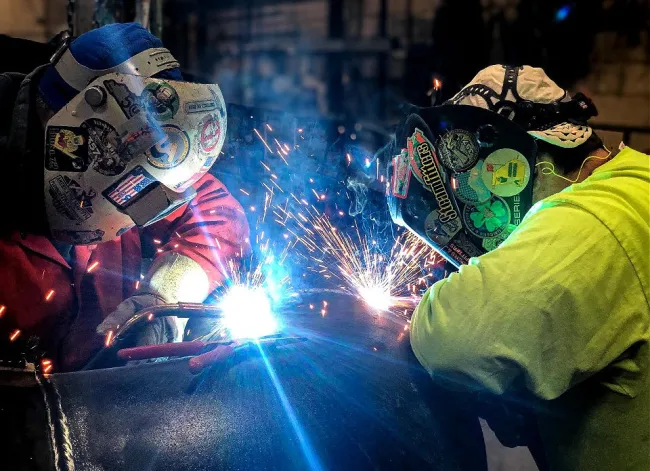
What Does a Pipefitter or Steamfitter Do?

Responsibilities
- Cut, thread or hammer pipes to specifications, using tools such as saws, cutting torches, pipe threaders or pipe benders
- Read blueprints and make pipe systems based on those specifications
- Assemble or secure pipes, tubes and fittings by welding, brazing, cementing, soldering or threading joints
- Inspect, examine and test installed systems
- Modify, clean, maintain and repair pipe systems
- Prepare cost estimates for clients (if you are working independently)
How To Become a Pipefitter or Steamfitter: FAQs
The bottom line:
These in-demand, high-paying jobs are wonderful opportunities for someone who wants to go deep to learn a trade. That’s one of the reasons it’s one of SkillPointe's highest paying trade jobs that don’t require a bachelor’s degree. Once you’ve earned your license as a pipefitter or steamfitter, the opportunities will be everywhere. (And did we mention little to no debt compared to other routes?) On top of that, this is a trade where you can continue to learn new skills and technologies. Sound interesting? Learn more about training options below.

What is it like to be a steamfitter?
Todd Clements gets a lot of satisfaction knowing that the work he does is saving lives — maybe not like an EMT saves lives, but just as crucial. Todd is a steamfitter, and he creates piping systems for industrial processes, including systems for the pharmaceutical industry.
He didn't know what the job involved until he learned about an apprenticeship program with UA Local 440 in Indianapolis.
"I didn’t know anything about the trade before I got accepted. With the great instructors and on-the-job training, it helped me develop the skills needed to be a great mechanic in our trade."
Read more about why Todd enjoys being a steamfitter.
Are there certification requirements for this career?
Find Pipefitter / Steamfitter Training In Your Area
Need help reaching your goals?
Explore our Financial Resources page for scholarships, FAQ answers and student support services.

